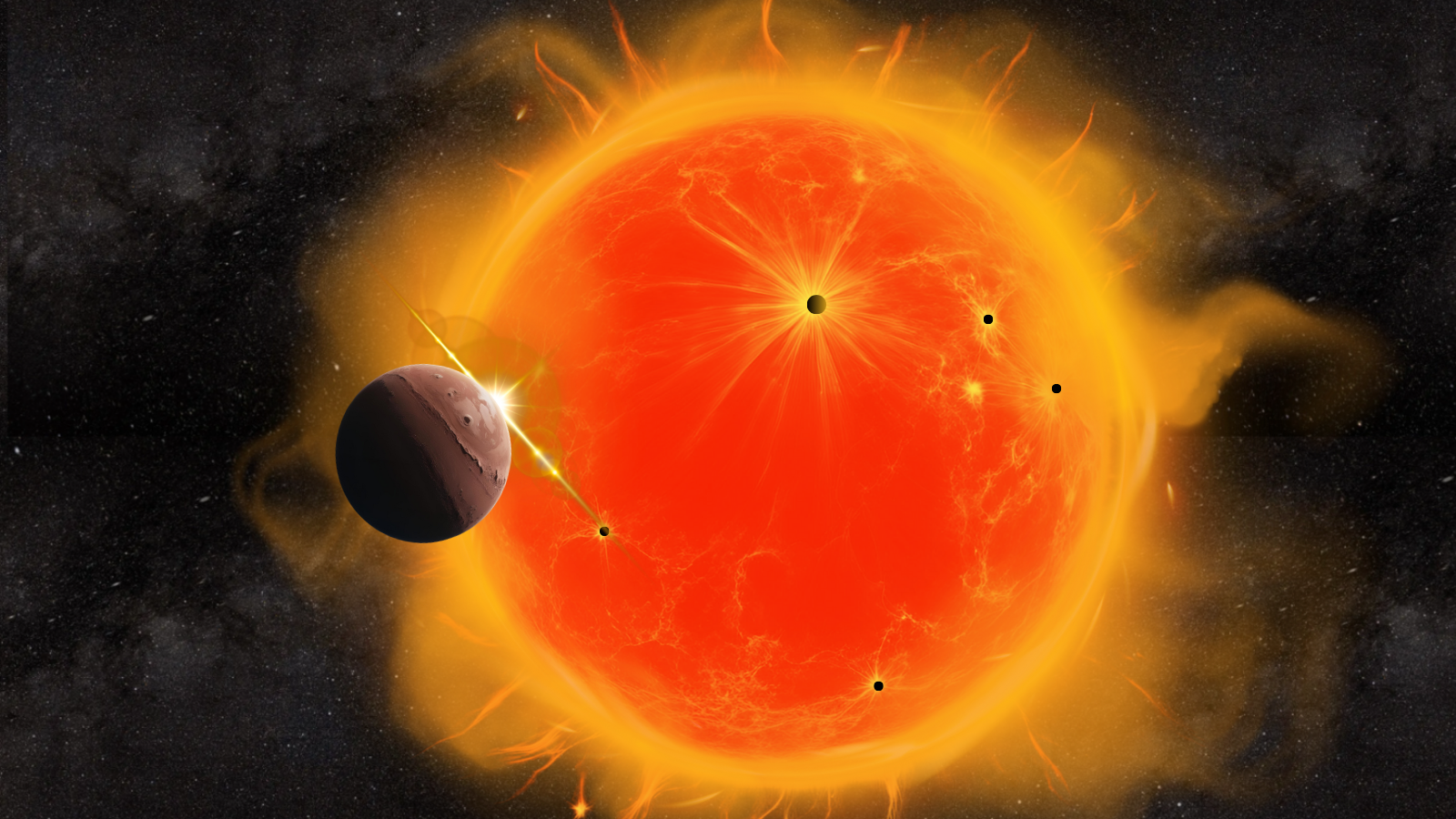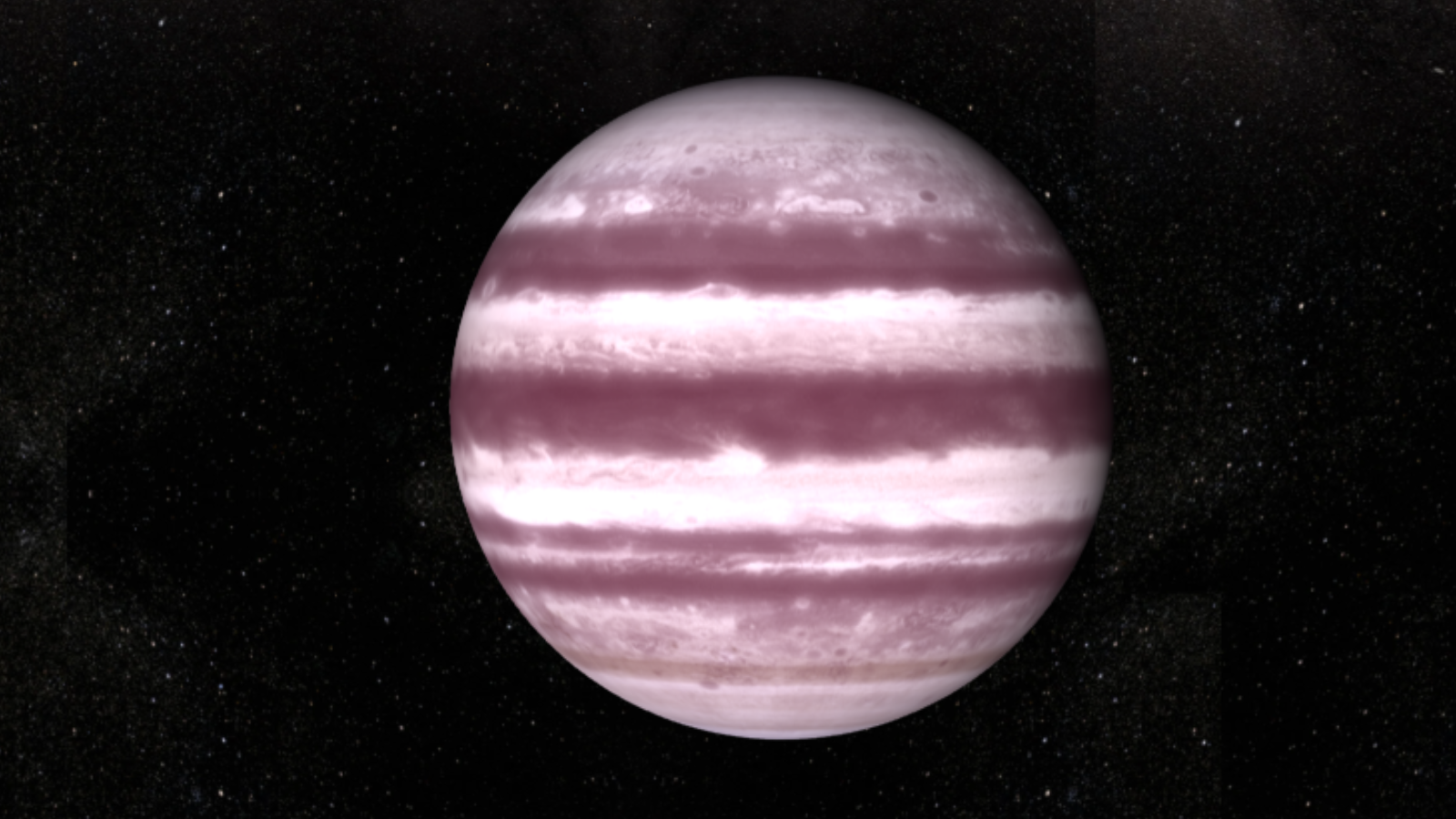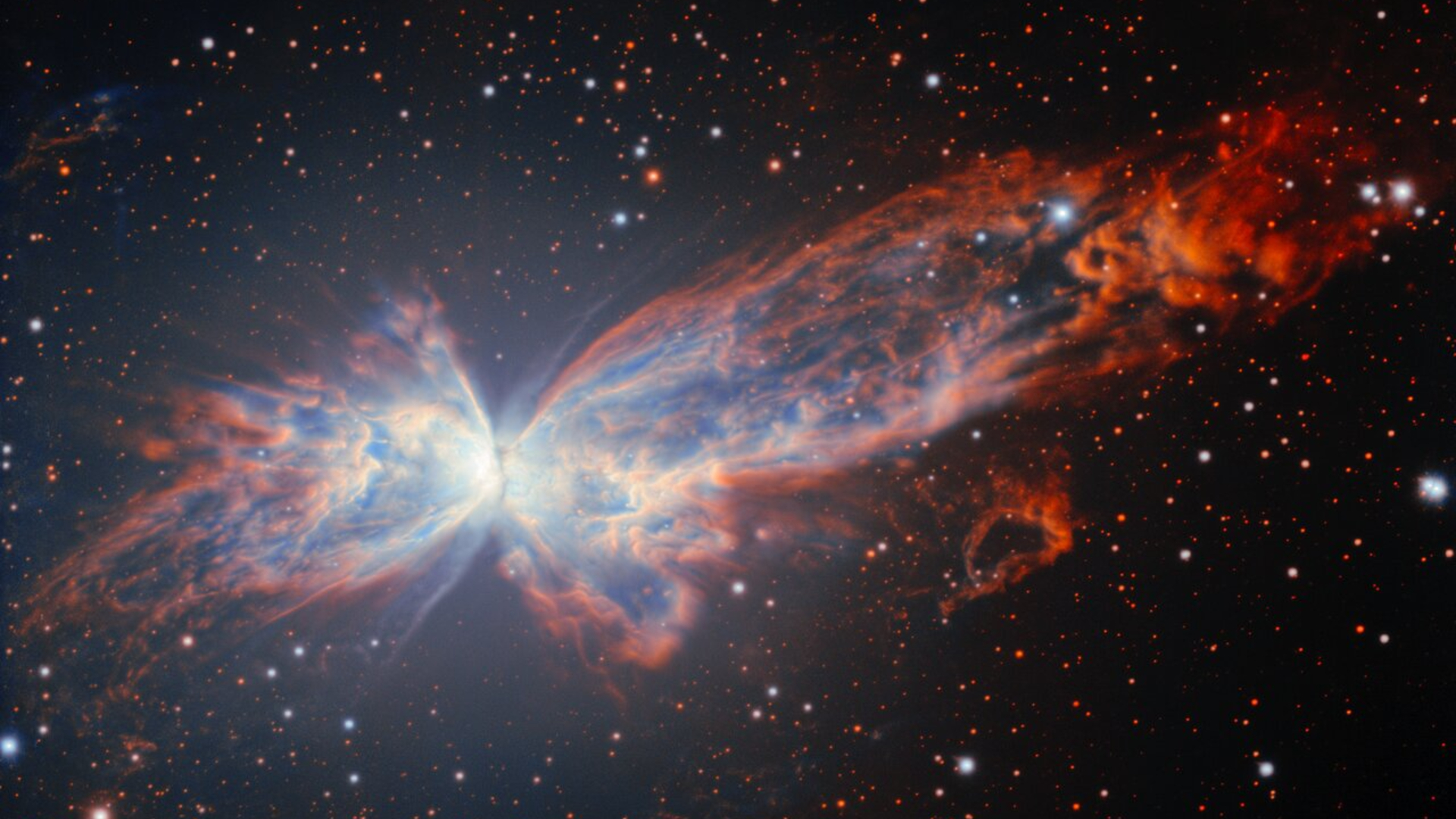How scientists are using exoplanets to map out 'polka dots' on stars
"Our approach gives astronomers an idea of how many spots a star might have, where they are located, and how bright or dark they are."

NASA scientists have devised a new way to use planets that cross, or "transit," the face of their parent stars to investigate stellar "spottiness." The new technique, called the "StarryStarryProcess," could also be used to discover more about the atmospheres of planets.
The StarryStarryProcess builds upon the transit method that has been employed by NASA's TESS (Transiting Exoplanet Survey Satellite) and now-retired Kepler space telescope missions to detect exoplanets. It could be employed by astronomers to assess data from these missions and from NASA's forthcoming Pandora exoplanet-observing satellite.
"Many of the models researchers use to analyze data from exoplanets, or worlds beyond our solar system, assume that stars are uniformly bright disks," study team leader Sabina Sagynbayeva, of Stony Brook University in New York, said in a statement. "But we know just by looking at our own sun that stars are more complicated than that. Modeling complexity can be difficult, but our approach gives astronomers an idea of how many spots a star might have, where they are located and how bright or dark they are."
What do transits tell us?
TESS and Kepler have used the transit method to great effect to discover planets beyond the solar system. In fact, the majority of the over 5,000 worlds in the exoplanet catalog were discovered via the tiny dips in starlight they cause as they cross the face of their parent star.
Tracking how a star's light changes as a planet moves across its face from our position here on Earth helps build a light curve. Brightness falls slightly as the planet moves in front of the star, with minimum brightness achieved when the exoplanet is fully in front of the star. The brightness then steadily increases as the planet moves past the star, bringing the transit to a close.
In addition to helping discover planets, measuring transits can help determine the distance between a planet and its star, as well as the planet's size and rough surface temperature. Additionally, because chemicals absorb light at characteristic wavelengths, as starlight passes through the atmosphere of a planet, a process called spectroscopy can be used to determine the chemical composition of that atmosphere.

However, astronomers often find that light curves aren't as straightforward as they appear. In addition to the drops caused by planetary transits, scientists have spotted dips that are smaller and more complicated. The prevailing theory is that these are the result of "starspots" akin to the sunspots that punctuate the surface of our star, the sun.
Breaking space news, the latest updates on rocket launches, skywatching events and more!
The number of sunspots, which are cool and dark patches on the sun, varies across its 11-year solar cycle, with the maximum number of sunspots corresponding with maximum solar activity. They can often be used to predict solar activity and how the solar cycle is progressing.
Therefore, secondary dips in light curves can be used to determine how active the star is, which direction it is tilted, and the angle of the transiting planet's orbit. The StarryStarryProcess takes this to the next level, revealing even more about these characteristics.
"Knowing more about the star in turn helps us learn even more about the planet, like a feedback loop," team member Brett Morris, a senior software engineer at the Space Telescope Science Institute in Baltimore, explained in the same statement.
"For example, at cool enough temperatures, stars can have water vapor in their atmospheres," Morris added. "If we want to look for water in the atmospheres of planets around those stars — a key indicator of habitability — we'd better be very sure that we’re not confusing the two."

To test the StarryStarryProcess, the team looked at the transits a planet called TOI 3884 b makes of its parent star, located around 141 light-years away. The planet is believed to be a gas giant, around five times the size of our planet but with 32 times its mass. TOI 3884 b was discovered in 2022 by TESS.
Using the StarryStarryProcess, the team determined that the parent star of TOI 3884 b has groups of starspots concentrated at its north pole, which is tilted toward Earth. This also means that TOI 3884 b crosses the poles of its parent star from our perspective as it makes its transits.
At the moment, the StarryStarryProcess can only be used in visible light, meaning it can't be applied to exoplanet observations made by the James Webb Space Telescope (JWST). However, the Pandora satellite, which is expected to launch later this year, will make its observations in multiple wavelengths of light, meaning that scientists can make use of this new model again once it starts collecting data.
"The TESS satellite has discovered thousands of planets since it launched in 2018. While Pandora will study about 20 worlds, it will advance our ability to pick out which signals come from stars and which come from planets," Allison Youngblood, TESS project scientist at NASA’s Goddard Space Flight Center in Maryland, said in the statement. "The more we understand the individual parts of a planetary system, the better we understand the whole — and our own."
The team's research was published on Monday (Aug. 25) in The Astrophysical Journal.

Robert Lea is a science journalist in the U.K. whose articles have been published in Physics World, New Scientist, Astronomy Magazine, All About Space, Newsweek and ZME Science. He also writes about science communication for Elsevier and the European Journal of Physics. Rob holds a bachelor of science degree in physics and astronomy from the U.K.’s Open University. Follow him on Twitter @sciencef1rst.
You must confirm your public display name before commenting
Please logout and then login again, you will then be prompted to enter your display name.
